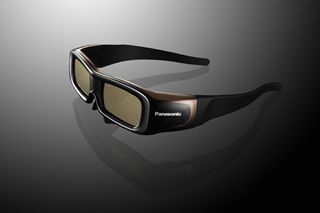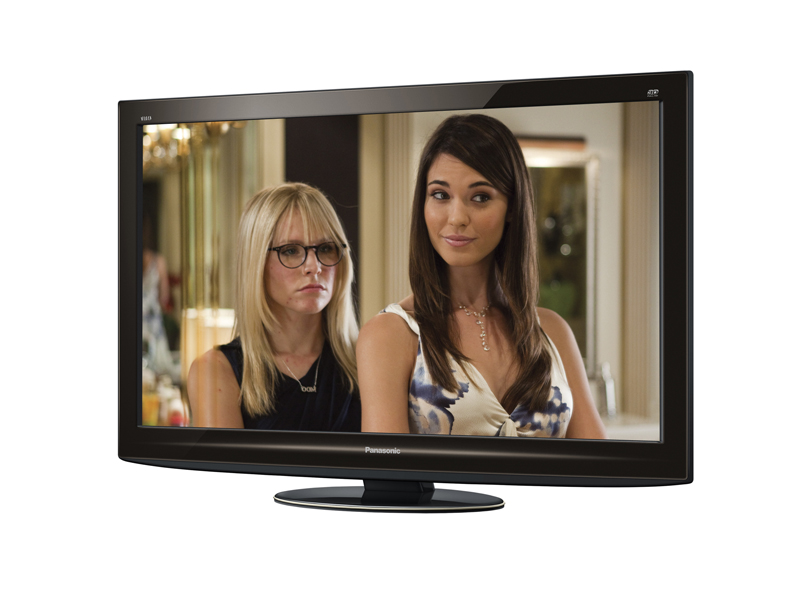Why you can trust TechRadar

The 3D talents of the P42GT20 are, of course, 'active', which is to say they involve showing full HD 3D frames sequentially, rather than reducing image resolution to show two side-by-side frames simultaneously.
The P42GT20 does support such 3D sources, like Sky's 3D channel and the current breed of 3D games, though: it just converts them to a full HD sequential frame approach for output to Panasonic's 3D glasses.
The supplied glasses are still Panasonic's deeply uninspiring original models, which let loads of light in around the lenses, rather than the supposedly much-improved new models starting to hit shops now.

As mentioned earlier, the P42GT20 adds a 2D to 3D conversion system, which represents an abrupt about-face for a company originally adamant that it wouldn't have any truck with 2D to 3D nonsense.
One final handy 3D improvement carried by the GT20 series is the ability to play 3D camcorder and DivX video from the TV's multimedia inputs. This feature is apparently addable to the original VT20 models via a firmware update, too.
The multimedia inputs comprise a D-Sub PC input, two USB slots and a LAN port. The three latter sockets enable a variety of functions. You can use one of the USBs, for instance, with one of Panasonic's optional Wi-Fi dongles. Or you can use them for adding a Buffalo JustStore hard-disk drive that you can record to from the built-in digital tuners. Or you can use them for playing back JPEG, video and music files from USB storage devices.
As for the LAN, it's there first to satisfy the requirements of its built-in Freeview HD and Freesat HD tuners (for yes, it has both). But it also enables you to get files off a networked DLNA PC, or go online with Panasonic's Viera Cast platform.
This has one of the best interfaces we've seen with a TV internet system and its content level is solid enough. There's no doubt, though, that Samsung and Sony's online services offer much more content. Also, Philips and, more recently, Sharp, both offer open internet access, which Panasonic does not.
Other connections on the P42GT20 include four HDMIs (built to the 3D-enabled v1.4 spec), and both RF and satellite LNB inputs to support the twin HD tuners.
Heading into the P42GT20's setup menu, a THX picture preset instantly reveals that the TV has been officially endorsed by the renowned third-party 'quality assurance' outfit. Arguably even better is an endorsement from the Imaging Science Foundation, with two Pro picture presets set aside for their engineers to use if you want to pay them to calibrate day and night settings for you.
The sort of picture adjustments that will have helped win the ISF to the P42GT20's cause include an adequate colour management system and gamma controls. There's still plenty of room for improvement with these advanced options, it has to be said, but at least it's a long overdue start along the calibration road by a brand that's been oddly reluctant to offer such flexibility in the past.
The P42GT20 enjoys '600Hz' sub-field drive technology, too, where the plasma cells are pulsed enough times each second to deliver a 600Hz effect (though this shouldn't be mistaken for a true 600 frames per second image refresh rate).
Then there's Panasonic's Vreal Pro 5 processing, working away on just about every picture element not covered by any other processing department; plus there's Panasonic's Intelligent Frame Creation Pro system for interpolating extra frames of image data.
Final notable features of the P42GT20 are its extremely wide realistic viewing angle versus LCD TVs and its design, which, with its drab shape and dull colour scheme, is an entirely inappropriate home for the set's cutting edge technology.
Current page: Panasonic TX-P42GT20: Features
Prev Page Panasonic TX-P42GT20B: Overview Next Page Panasonic TX-P42GT20: Picture qualityJohn has been writing about home entertainment technology for more than two decades - an especially impressive feat considering he still claims to only be 35 years old (yeah, right). In that time he’s reviewed hundreds if not thousands of TVs, projectors and speakers, and spent frankly far too long sitting by himself in a dark room.














